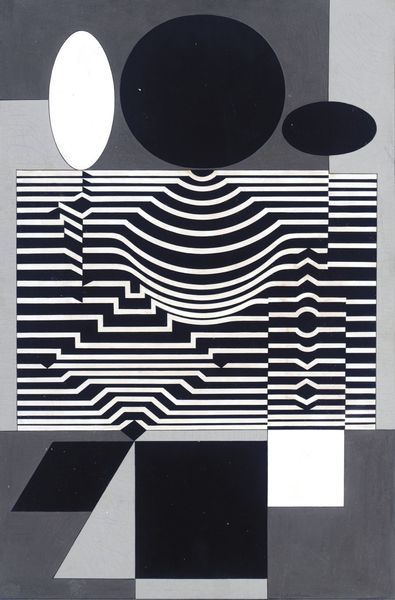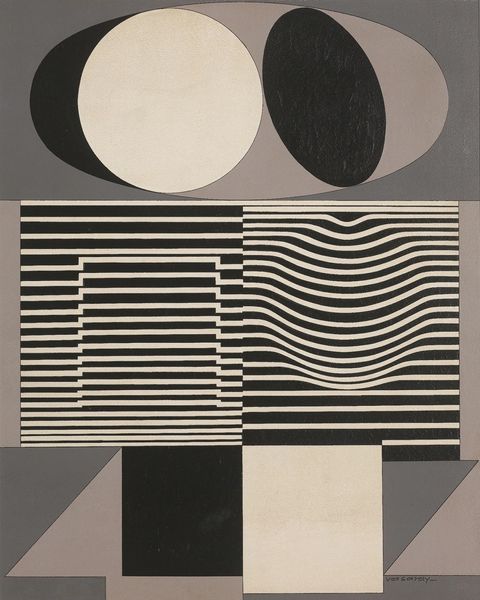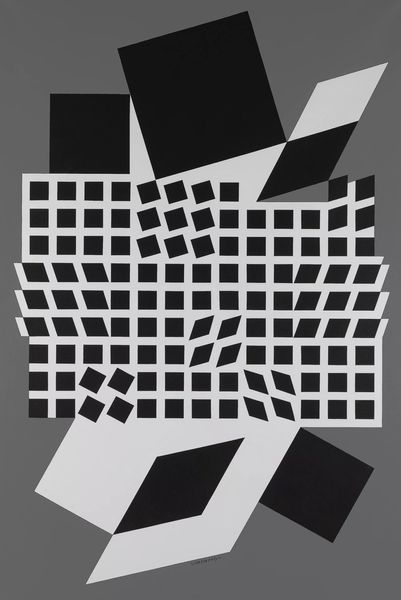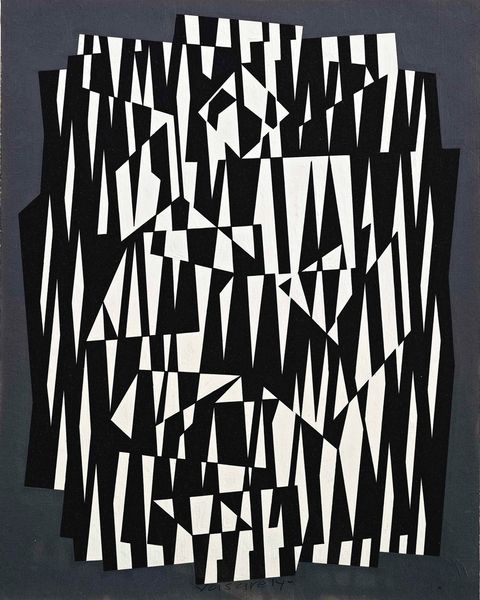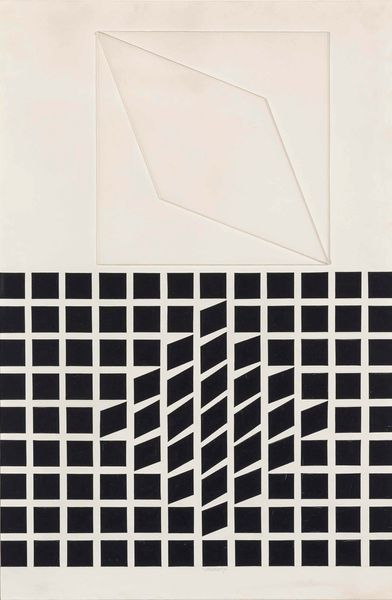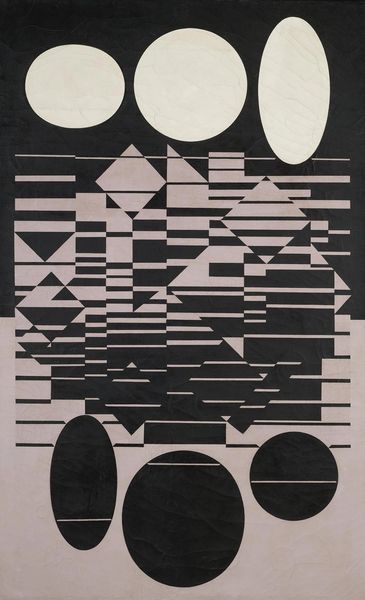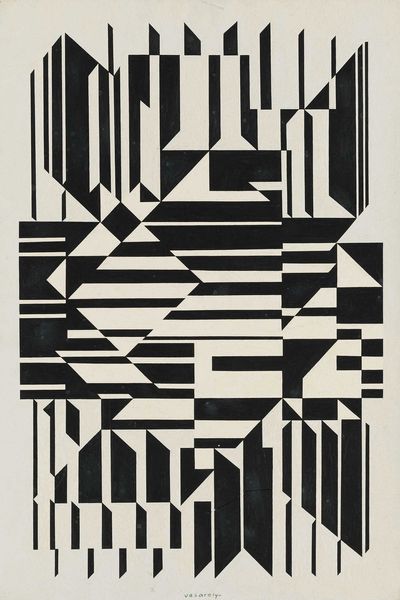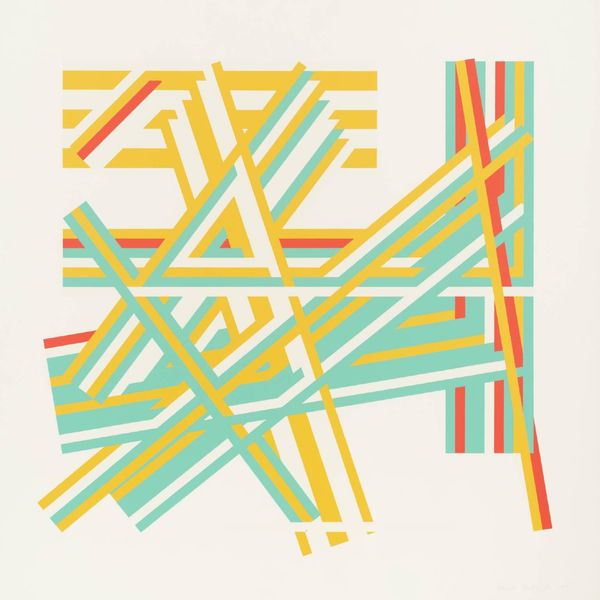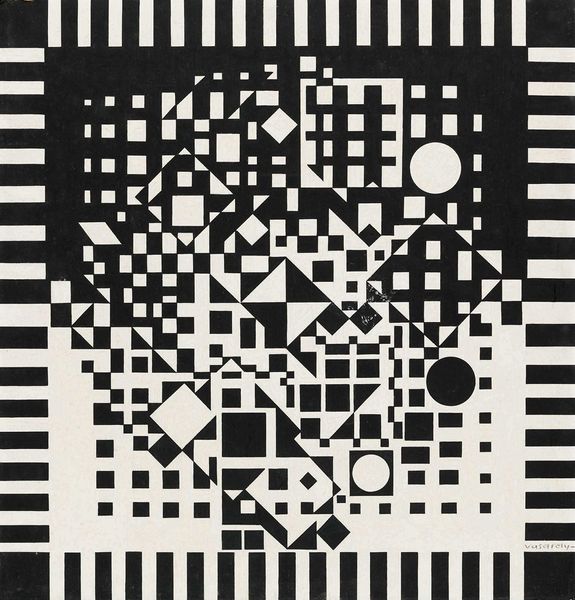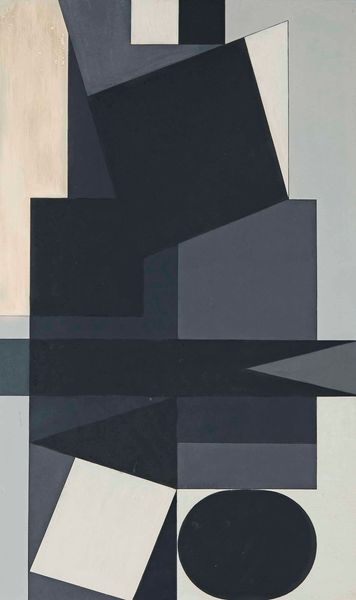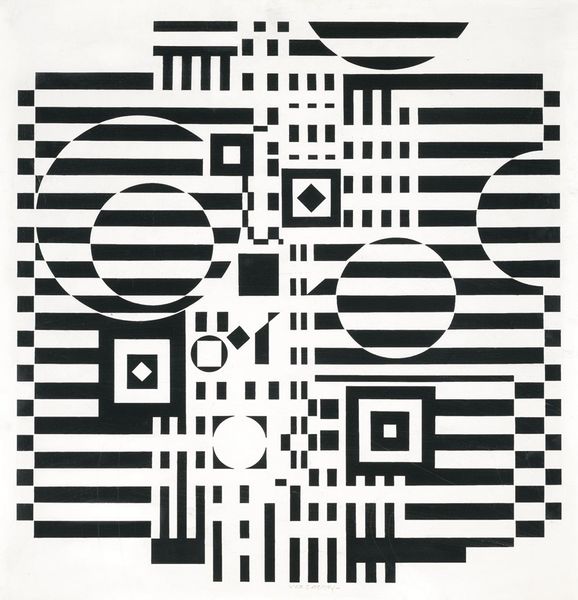
painting, acrylic-paint
#
op-art
#
painting
#
acrylic-paint
#
abstract
#
form
#
geometric
#
repetition of pattern
#
abstraction
#
line
#
modernism
#
monochrome
Copyright: Modern Artists: Artvee
Curator: Here we have Victor Vasarely's "Tampico," an acrylic painting from 1972. My initial thought is the hard lines and monochrome scheme project a very calculated, almost sterile feel. What’s your take? Editor: The first thing that strikes me is the surface quality; the cool, smooth finish of the acrylic makes you aware of its artificial, manufactured nature. There’s no trace of the artist's hand that way. Curator: Precisely. And that aligns perfectly with Vasarely's interest in democratizing art, mass-producing images through industrial processes, rejecting the traditional aura of the unique art object. "Art for all," as the saying goes. Editor: "Art for all", perhaps, but how 'for all' if the means of distribution and reception are still determined by powerful institutions and private collectors? I always find this tension interesting when discussing his works. The rigid forms almost feel mass-produced—almost like he envisioned these patterns imprinted on commercial materials. Curator: That connects directly to the social and political climate. Remember, this period witnessed the rise of consumer culture. The bold, graphic language that Vasarely uses was quickly adopted in advertising and design, impacting visual culture and reinforcing the role of art in everyday life. Editor: So we have this painting gesturing towards consumerism while physically being consumed by capitalist interests at the same time. It almost becomes like labor, each line laid to manufacture an endless possibility of a surface of production. Did Vasarely have any kind of relationship with design industries, with manufacturers that would take interest in this kind of pattern making? Curator: Yes, definitely. And his works are deeply influenced by architecture. If we see at this painting that way, the circles and geometric shapes evoke the architecture and design of the Bauhaus movement and the post-war concrete constructions around Europe. His artworks were eventually displayed in public buildings and urban spaces to communicate with the public. Editor: Seeing those repeated lines, shapes... there is something meditative at the idea of industrial processes or even architectural making and all the steps to execute works that we just perceive as a unique, individual experience. Curator: Indeed. The beauty of abstraction is precisely that, its openness to interpretation, always contextual, shaped by social forces, and made tangible through materiality and the making of art. Editor: Thanks for guiding us through those insights!
Comments
No comments
Be the first to comment and join the conversation on the ultimate creative platform.
